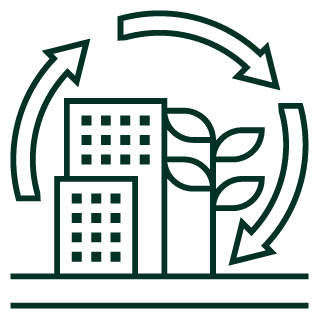Materiality & Embodied Carbon Assessments
Advice on the environmental and health and wellbeing impact of material choices. Co-ordination of embodied carbon modelling to establish potential carbon savings, options and LETI benchmarking. Preparation of Circular Economy Statements based on Whole Life Carbon Assessments.
UKGBC defines Embodied Carbon emissions as: ‘the total greenhouse gas (GHG) emissions (often simplified to “carbon”) generated to produce a built asset. This includes emissions caused by extraction, manufacture/processing, transportation and assembly of every product and element in an asset. In some cases, (depending on the boundary of an assessment), it may also include the maintenance, replacement, deconstruction, disposal and end-of-life aspects of the materials and systems that make up the asset. It excludes operational emissions of the asset.’
Pressure is mounting on more a more detailed consideration of the materials we use. This reflects increased material costs and sustainability ESG or NZC policy requirements. These policies often require Whole Life Carbon Assessments to quantify the embodied carbon emissions over the life of the asset.
Our choices of materials, particularly within internal fit outs can also significantly impact the health and wellbeing of the users affecting productivity, absenteeism and stress levels. We are seeing a growing trend towards of retrofitting existing building stock in preference to the building of new buildings on an environmental and moral basis.
Our experts are able to advise on the environmental and health and wellbeing impact of material choices within both the retrofit and new build markets. We can co-ordinate embodied carbon modelling to establish where carbon might be saved and compare the whole life carbon of different choices and to benchmark building options against the LETI standards. We can also prepare Circular Economy Statements based on Whole Life Carbon Assessments and we can benchmark finishes against the WELL and Fitwell standards.







